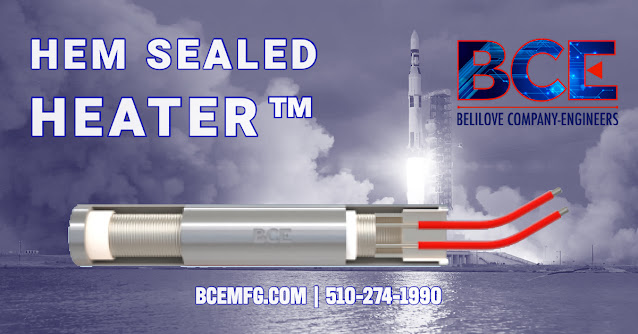In addition to optimizing liquid flow in space launches, more research and design facilities require a heater that will work in vacuum without outgassing the internal resistor and insulating materials. Materials such as chromium and particles from the magnesium oxide begin to outgas. Placing a vacuum barrier that keeps these particles in place and allows the operator to process without consistently replacing heaters, should increase productivity.
HEM Sealed Heater™/ Vacuum Chambers:
- Temperature range of -55⁰C to +200⁰C Sheath Temperatures
- Stainless steel 321 for heated zone, 304 Hem Sealed Cap
- 18AWG to 32AWG Kapton®/polyimide Lead wires
- 500Watt (± 10%) , 240 Volt, 1-phase
- He Leak Tested = 5 x 10¯⁹ ATM, CC/sec or better
- Hi-Pot Test 1K*2E 1 2 seconds (1500-2250VDC 0.5mA)
- Meg-Ohm 20 to 4,000+ @ 500VDC
OUTCOME:
This test was performed in atmosphere within a 3.5 hour time frame. The temperature was held each hour after the initial ramp to sheath temperature as noted in the graph below.
The temperature of 200°C was held for the 2nd hour and then the heater was powered ~250°C and held until the test was complete after about 3.5 hours.
At lower temperatures of ~200°C, the Hem Sealed™ Cap reached 60°C keeping the vacuum integrity as per the maximum heater transition temp of 70°C. The maximum temperature on the sheath tested was to 250°C with the Hem Sealed™ Cap at 79°C.
Special note; if a heater block or other device being heated, the optimal bore diameter vs heater diameter for the best heat transfer should be +.0020” to +.0025”.
